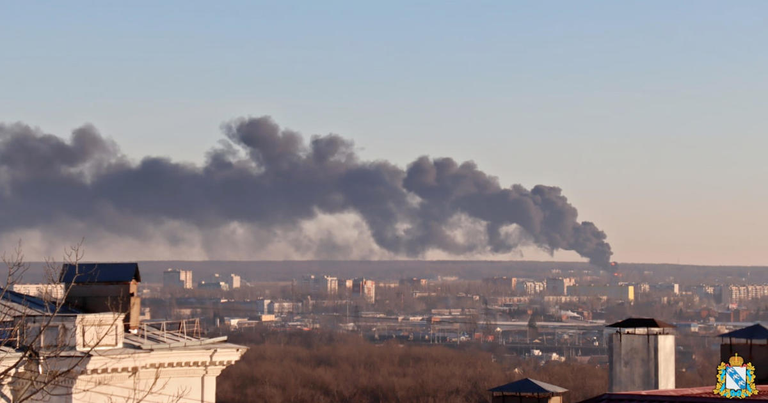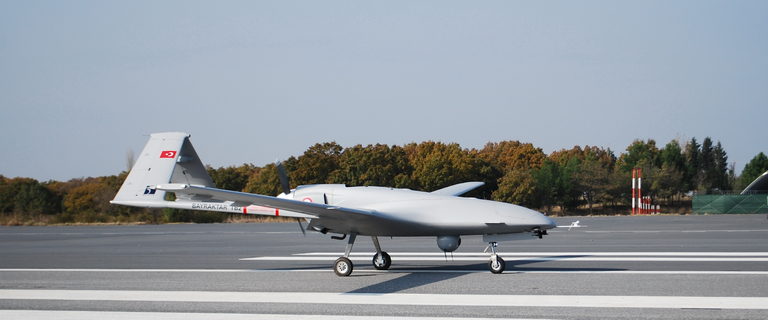On Monday morning, Russian state media reported two large explosions at two Russian air bases. The Engels 2 air base in Saratov oblast and the Diagalivo air base in Ryerson oblast, three kilometers west of Ryerson City. Now, you might be thinking that explosions near military installations aren't exactly unusual during wartime. What makes these attacks so remarkable is that these air bases are literally hundreds of kilometers away from the front lines, and they came a day after Ukraine announced successful tests of a long-range strike drone. Now, this looks like pretty terrible news for the Russians, because it might mean that the Ukrainians have the capability to strike targets well within Russia and not just in and around the battlefield. And this poses both a military and political problem for the Kremlin. So in this article, we'll be taking a look at the strikes themselves, how they might change the trajectory of the war, and what all of this says about modern warfare more generally.

So let's start with the strikes themselves. At about 6 a.m. local time on Monday morning, Russian state media outlets reported that there had been two major explosions at the DYAGILEVO and ENGELS2 air bases in Russia. According to the Russian Defense Ministry, three Russian servicemen were killed and four were injured, and the large explosion in the video was apparently the result of an exploding fuel tanker. According to Russian state media outlet Baza, two Tu-95s were also damaged by the explosions. Now, while Ukraine didn't officially take responsibility for the attacks, Ukraine's Air Force put out a provocative tweet with photos of the aftermath of the explosions, and they all happened just a day after Ukraine's domestic arms manufacturer announced that it had successfully tested a drone with a range of 1000 kilometers.
So it's pretty safe to say they were behind it, and this is a big achievement for them because since the war began, the Ukrainians had been trying to design and buy a cheap strike drone akin to the Shah head drones made by Iran and the switchblade drones designed by the US, which have both proved particularly effective in the conflict thus far. Now obviously the Ukrainians don't have the same technology as the Iranians or the Americans, but that doesn't seem to have stopped them, and it looks like the drones that were used in Monday's attacks were actually modified Soviet Recon drones made in the 1970s and 1980s with an improvised 75-kilogram warhead. But this isn't the first time that Ukrainians have modified tu-141s; way back in March, a tu-141 with a warhead attached accidentally landed in Croatia, and in July, Russian authorities claimed that they'd shot down two tu-141s headed for Kurtzk.

Now, this is all bad news for Putin, both politically and militarily. Politically, it's deeply embarrassing. Engels-2 and Dyagilevo are two of the largest air bases in Russia and two of only three air bases that host Tu-95s, and just the fact they've been struck will be politically humiliating for him. Not least because Engels 2 is 700 kilometers away from the closest Ukrainian position, and as expected, that didn't go down well on Russian telegram channels. On top of that, Ukraine has now demonstrated that they can strike targets deep within Russia, and the threat of strikes in Russian cities might dampen the Russian public's enthusiasm for war. If these modified TU-141s have a range of 1000 kilometers, as the original unmodified TU-141s did and as the Ukrainians claimed in their recent press release, they could reach Moscow, Saint Petersburg, or even Dagestan.
While the Russian public has so far appeared pretty supportive of Putin's so-called special military operation, this support is at least partly contingent on them being insulated from the worst of the conflict. Since it came to power in the early 2000s, there has been an implicit contract between Putin and the Russian people that as long as he stays in power, he'll keep them away from the front lines, which is why he's trying to move the military away from a conscription model towards a professionally contracted army. And why he's so far refrained from going for a general mobilization, and ultimately all of this is what's made him so popular among the Russian public. But if a drone starts landing in, say, Moscow, this could be a violation of the implicit contract and could undermine support for both the special military operation and Putin himself.

Beyond military politics, it's bad for a variety of other reasons. Obviously, the fact that two bombers have been damaged is bad news in and of itself, but perhaps more significantly, the fact that Ukraine can now strike targets hundreds of kilometers behind the front lines will put even more pressure on Russia's logistical operations. With these modified drones, Ukraine can now strike ammunition deposits and other military bases deep within Russia, including hangars where Russian vehicles are literally lined up in rows waiting to be hit. Now that Russia's logical operation has already proven pretty crap, further pressure on supply lines could prove fatal for Russian troops, especially in the South, where they're reliant on just one or two routes for all of their supplies. Now this problem will only be compounded by the coming winter, which will increase troop demands and make transporting supplies a bit more difficult.
On top of that, the success of these strikes proves that Russia's air defense systems aren't anywhere near as effective as once advertised. The fact that a 50-year-old jet-powered Soviet drone was able to travel literally hundreds of kilometers into Russia suggest that these systems, or at least the ones deployed in Russia, aren't as effective as the Kremlin thinks they are, and that is obviously bad news for Russia because it leaves Russian targets vulnerable to Ukrainian drone strikes, but it also undermines their nuclear deterrent too. That's because the strength of any nuclear deterrent depends on air defense because you need good air defense to guarantee second strike capability and protect against a retaliatory strike. Now obviously, if Russia's air defense isn't as good as portrayed, then it undermines their nuclear deterrence because other nuclear powers would know that they'd be guaranteed to strike their targets in the event of a nuclear exchange.

If you get the idea, then these drone strikes are bad for Russia and for the Kremlin across basically all dimensions. As a final thing, all of this is yet more evidence that drones are the future of warfare at large, at least in the near term. That's because drones have proved remarkably effective throughout this entire conflict. Whether it's the Turkish-made Barack Tar drones that helped Ukraine defend Kiev in February and March or the Iranian-made Shah Head drones that the Russians have been swarming against Ukraine since September, drones have proved to be incredibly effective, and they're also impressively cheap. A shower head drone, for example, costs about 50 times less than a caliber cruise missile, and this is all evidence that drones are perhaps the most cost-effective weapon in a modern military. Now, what Ukraine does with its newfound weapons and how Russia responds is yet to be seen.